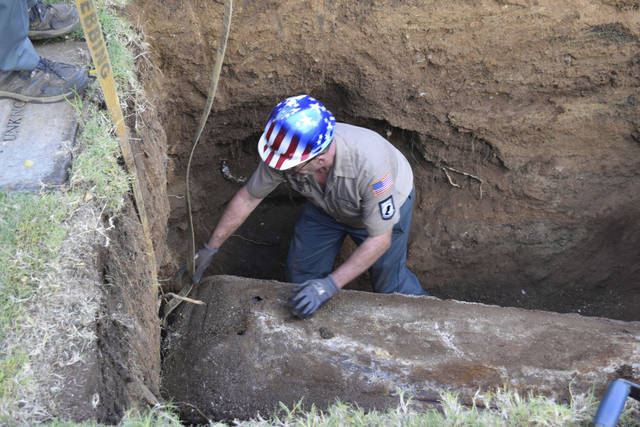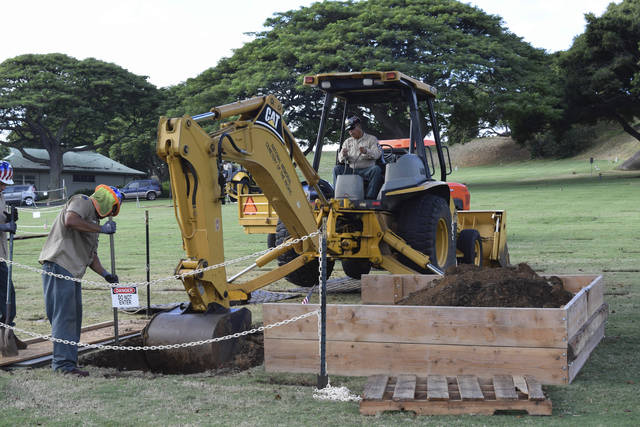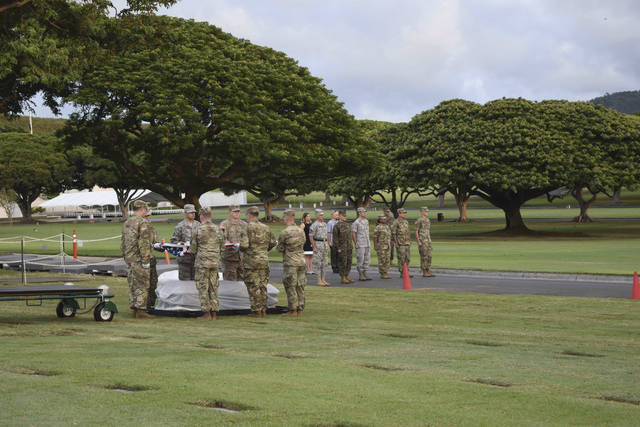HONOLULU — Military and Veterans Affairs officials are digging up the remains of 94 unidentified Marines and sailors killed on a remote atoll in the Pacific during one of World War II’s bloodiest battles. ADVERTISING HONOLULU — Military and Veterans
HONOLULU — Military and Veterans Affairs officials are digging up the remains of 94 unidentified Marines and sailors killed on a remote atoll in the Pacific during one of World War II’s bloodiest battles.
The servicemen were killed in the Battle of Tarawa in 1943 and buried as unknowns at a national cemetery in Honolulu after the war. Defense POW/MIA Accounting Agency spokeswoman Maj. Natasha Waggoner said Tuesday advances in DNA technology have increased the probability of identifying the unknowns.
More than 990 U.S. Marines and 30 U.S. sailors were killed in the three-day battle. About 550 are still unidentified, including some still in Tarawa, Waggoner said.
National Memorial Cemetery of the Pacific spokesman Gene Maestas said the disinterments began in October. The cemetery, which is also known as Punchbowl, expects to transfer the last eight servicemen to the military next Monday.
The exhumations come two years after the Pentagon announced new criteria for exhuming remains from military cemeteries for identification. Shortly after, it dug up from Punchbowl cemetery the remains of nearly 400 unknowns from the USS Oklahoma who were killed in the 1941 Japanese bombing of Pearl Harbor. The work to identify them is expected to take about five years.
Waggoner said her agency doesn’t have an estimate for how long it will take to identify the Tarawa remains. That’s because some of the skeletons from Punchbowl are incomplete and parts of some bodies are still in Tarawa.
The agency recently received Pentagon approval to exhume some 35 Punchbowl graves believed to hold the unidentified remains of servicemen from the USS West Virginia, which was also hit in the Pearl Harbor attack. The agency will schedule these disinterments after it gets a permit from the state of Hawaii, she said.
Tarawa, which is some 2,300 miles (3,700 kilometers) southwest of Honolulu, is today part of the Republic of Kiribati.
During the U.S. amphibious assault on Tarawa 74 years ago, Japanese machine gun fire killed scores of Marines when their boats got stuck on the reef at low tide. Americans who made it to the beach faced brutal hand-to-hand combat.
Only 17 of the 3,500 Japanese troops survived. Of 1,200 Korean slave laborers on the island, just 129 lived.
The U.S. quickly buried the thousands of dead. But these graves were soon disturbed as the Navy had to quickly build an airstrip to continue their push west toward Japan.





